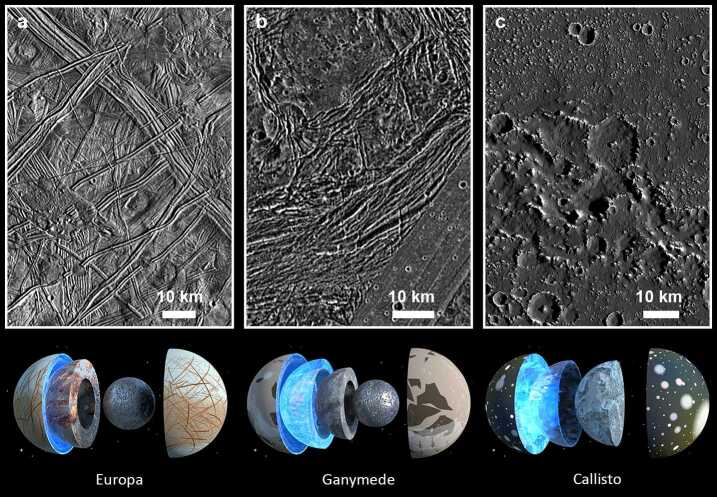Fig. 2.
Above: Examples of typical surfaces of the icy Galilean satellites (panel a: Europa, near Conamara Chaos region at 8.1°N/90.9°E; panel b: Ganymede, Nicholson Regio at ∼14°S/12.7°E; panel c: Callisto, detail of Asgard impact basin at 14.7°N/218°E). All images are scaled to 150 m px−1. The crater density (a proxy of surface age) increases from Europa to Callisto, reflecting the geological history of surface processes. The surface of Europa displays the most complex inventory of landforms that were formed by endogenic processes, whereas Callisto’s surface is almost devoid of any evidence for tectonic and cryovolcanic activity (Image: NASA/DLR). Below: Models of the interiors of the icy Galilean satellites (Images: ESA/ATG Medialab). Details on their examination by JUICE are provided by Van Hoolst et al. (2024, this collection)

